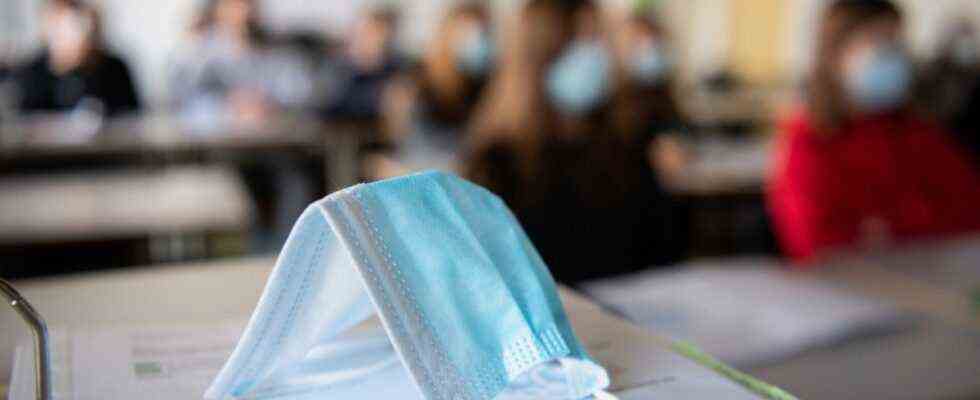The lack of understanding grows with every new coronavirus case: Who will protect our children and families? This is what parents at the Tutzing elementary school ask themselves after the pathogen has been spreading across classes there since the beginning of October. Why are the quarantine and test rules so lax, although it is known that the virus encounters vulnerable children in classrooms who, due to their age, cannot be vaccinated – but can very well be carriers. Is this risk the price for face-to-face teaching?
Within a few days, the number of infected children has doubled, on Monday Rector Anne-Katrin Schallameier reported 14 confirmed cases that a child was seriously ill. All three third grades and one first grade are now affected. “The virus is faster than us,” she says with regret. She can understand that many families felt compelled to report their children sick on Monday because they are worried about infection. After all, families in particular are highly fragile systems, an infection would banish parents and siblings back to home office and schooling, and put all leisure activities on hold.
Therefore, after the first case became known, Schallameier would have preferred to send the entire class into quarantine for several days and also reported this to the health department. “But I am not allowed to do that,” says Schallameier. After all, she made it mandatory for all primary and middle school students to wear a mask, including at the seat.
Health department manager Lorenz Schröfl relies on clear guidelines from the Ministry of Health. According to this, the first positive case in a school class would only have to quarantine the close contact persons for five days – provided they are not vaccinated or recovered, which applies to the majority at the primary school. “Usually these are the people sitting next to you,” says Schröfl. There are no daily tests for that long.
Only when a second child in the class is infected – as happened in Tutzing – does the quarantine extend to the whole class and the children have to take daily rapid tests in the classroom. This leads to a peculiar construct: the duration of the quarantine is calculated according to the first case. In practice, this leads to retroactive quarantines, which, of course, can hardly fulfill the desired purpose. What is the point if parents find out on Saturday evening that their child has actually been in quarantine since the previous Wednesday, but that football training and ballet lessons also took place?
Only if there are two proven cases in the class do the masks also have to be worn on site for 14 days. These requirements do not apply to the parallel classes with which they mix in religious instruction or physical education, for example. Schallameier can understand that after one and a half years of pandemic experience, one can only wearily smile at such rules. “I feel the same way, I smile with you.”
Rector Anne-Katrin Schallameier has made mask compulsory for everyone.
(Photo: Nila Thiel)
For Schröfl, dealing with the coronavirus in schools is a compromise. “It is a political trade-off between classroom teaching and infection control.” That is not easy with a rampant virus, but it is still possible to somehow “fish out” the infected. Schröfl knows what he’s talking about, he made a significant contribution to the fact that the first coronavirus outbreak in Germany could be contained at Webasto in Stockdorf. He considers a five-day quarantine to be the “absolute minimum”, but the doctor also knows other voices. “For some, the guidelines are too strict, others too casual,” he says. “No matter how you do it, you are always beaten.”
The infections at the Tutzing primary school are an example of how fragile classroom teaching is at primary schools. Also because hygiene concepts are not coordinated with facilities that look after the children after classes have ended. Many of the almost 250 primary school students visit the “Krambambuli” day care center run by the Bavarian Red Cross (BRK), where they eat, play and do their homework together. 68 children had to be quarantined as contact persons after the first case in the group. In order to avoid such dimensions in the future, the children are now cared for in three fixed groups, as BRK spokeswoman Karin Windorfer says.
The situation is similar in Gauting. On Monday, the midday care in Ammerseestrasse was almost orphaned. The health department had quarantined a total of 79 people on Saturday – retrospectively from Thursday. Two employees of the facility were tested that day, the positive PCR result came on Friday. The children were able to free themselves from quarantine on Monday, which in this case only lasted five days on paper.

